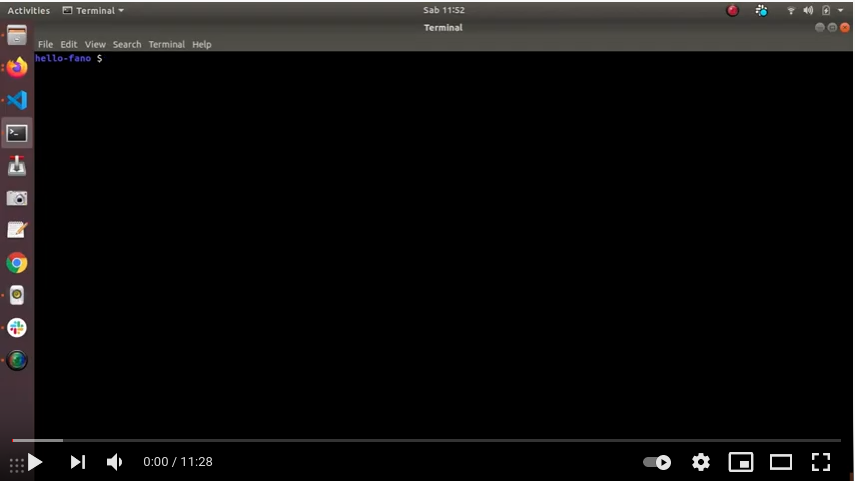SCGI web application using Fano Framework, Pascal web application framework to demonstrates how to use rate limit middleware. Learn more
This project is generated using Fano CLI command line tools to help scaffolding web application using Fano Framework.
- Linux or FreeBSD
- Free Pascal >= 3.0
- Web Server (Apache with mod_proxy_scgi, nginx)
- Fano CLI
- Web Server (Apache, nginx)
- Administrative privilege for setting up virtual host
Make sure all requirements are met. Run
$ git clone https://github.com/fanoframework/fano-rate-limiting.git --recursive
$ cd fano-rate-limiting
$ ./tools/config.setup.sh
$ ./build.sh
$ sudo fanocli --deploy-scgi=rate-limiting.fano
$ ./bin/app.cgi
Open internet browser and go to http://rate-limiting.fano. You should see application.
Make sure Free Pascal is installed. Run
$ fpc -i
If you see something like Free Pascal Compiler version 3.0.4, you are good to go.
Clone this repository
$ git clone https://github.com/fanoframework/fano-rate-limiting.git --recursive
--recursive is needed so git also pull Fano repository.
If you are missing --recursive when you clone, you may find that vendor/fano directory is empty. In this case run
$ git submodule update --init
To update Fano to its latest commit, run
$ git checkout master && git submodule foreach --recursive git pull origin master
Above command will checkout to master branch of this repository and pull latest update from master branch of Fano repository.
Copy *.cfg.sample to *.cfg.
Make adjustment as you need in build.cfg, build.prod.cfg, build.dev.cfg
and run build.sh shell script (if you are on Windows, then build.cmd).
These *.cfg files contain some Free Pascal compiler switches that you can turn on/off to change how executable is compiled and generated. For complete
explanation on available compiler switches, consult Free Pascal documentation.
Also copy src/config/config.json.sample to src/config/config.json and edit
configuration as needed. For example, you may need to change baseUrl to match your own base url so JavaScript or CSS stylesheets point to correct URL.
$ cp config/config.json.sample config/config.json
$ cp build.prod.cfg.sample build.prod.cfg
$ cp build.dev.cfg.sample build.dev.cfg
$ cp build.cfg.sample build.cfg
$ ./build.sh
tools/config.setup.sh shell script is provided to simplify copying those
configuration files. Following shell command is similar to command above.
$ ./tools/config.setup.sh
$ ./build.sh
By default, it will output binary executable in public directory.
To build for different environment, set BUILD_TYPE environment variable.
$ BUILD_TYPE=prod ./build.sh
Build process will use compiler configuration defined in vendor/fano/fano.cfg, build.cfg and build.prod.cfg. By default, build.prod.cfg contains some compiler switches that will aggressively optimize executable both in speed and size.
$ BUILD_TYPE=dev ./build.sh
Build process will use compiler configuration defined in vendor/fano/fano.cfg, build.cfg and build.dev.cfg.
If BUILD_TYPE environment variable is not set, production environment will be assumed.
Compilation will output executable to directory defined in EXEC_OUTPUT_DIR
environment variable. By default is public directory.
$ EXEC_OUTPUT_DIR=/path/to/public/dir ./build.sh
Compilation will use executable filename as defined in EXEC_OUTPUT_NAME
environment variable. By default is app.cgi filename.
$ EXEC_OUTPUT_NAME=index.cgi ./build.sh
Setup a virtual host. Please consult documentation of web server you use.
You need to have mod_proxy_scgi installed and loaded. This module is Apache's built-in module, so it is very likely that you will have it with your Apache installation. You just need to make sure it is loaded. For example, on Debian,
$ sudo a2enmod proxy_scgi
$ sudo systemctl restart apache2
Create virtual host config and add ProxyPassMatch, for example
<VirtualHost *:80>
ServerName www.example.com
DocumentRoot /home/example/public
<Directory "/home/example/public">
Options +ExecCGI
AllowOverride FileInfo
Require all granted
</Directory>
ProxyRequests Off
ProxyPass /css !
ProxyPass /images !
ProxyPass /js !
ProxyPassMatch ^/(.*)$ scgi://127.0.0.1:20477
</VirtualHost>
Last four line of virtual host configurations basically tell Apache to serve any
files inside css, images, js directly otherwise pass it to our application.
On Debian, save it to /etc/apache2/sites-available for example as fano-scgi.conf
Enable this site and restart Apache
$ sudo a2ensite fano-scgi.conf
$ sudo systemctl restart apache2
You need to deploy only executable binary and any supporting files such as HTML templates, images, css stylesheets, application config.
Any pas or inc files or shell scripts is not needed in deployment machine in order application to run.
So for this repository, you will need to copy public, Templates, config
and storages directories to your deployment machine. make sure that
storages directory is writable by web server.
When running build.sh script, you may encounter following warning:
/usr/bin/ld: warning: public/link.res contains output sections; did you forget -T?
This is known issue between Free Pascal and GNU Linker. See FAQ: link.res syntax error, or "did you forget -T?"
However, this warning is minor and can be ignored. It does not affect output executable.
Sometime Free Pascal can not compile your code because, for example, you deleted a unit source code (.pas) but old generated unit (.ppu, .o, .a files) still there or when you switch between git branches. Solution is to remove those files.
By default, generated compiled units are in bin/unit directory.
But do not delete README.md file inside this directory, as it is not being ignored by git.
$ rm bin/unit/*.ppu
$ rm bin/unit/*.o
$ rm bin/unit/*.rsj
$ rm bin/unit/*.a
Following shell command will remove all files inside bin/unit directory except
README.md file.
$ find bin/unit ! -name 'README.md' -type f -exec rm -f {} +
tools/clean.sh script is provided to simplify this task.
Free Pascal supports Windows as target operating system, however, this repository is not yet tested on Windows. To target Windows, in build.cfg replace
compiler switch -Tlinux with -Twin64 and uncomment line #-WC to
become -WC.
While you can use Lazarus IDE, it is not mandatory tool. Any text editor for code editing (Atom, Visual Studio Code, Sublime, Vim etc) should suffice.
